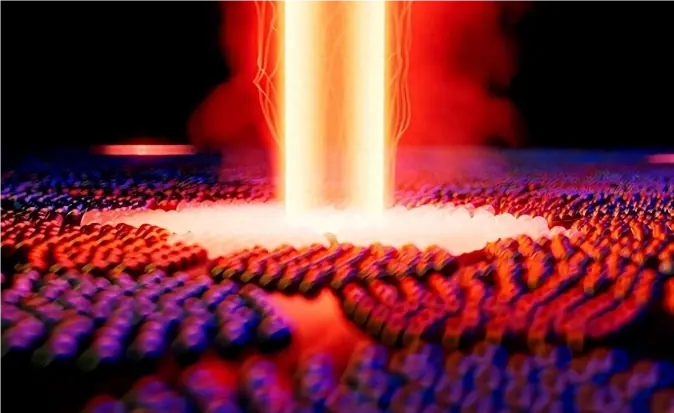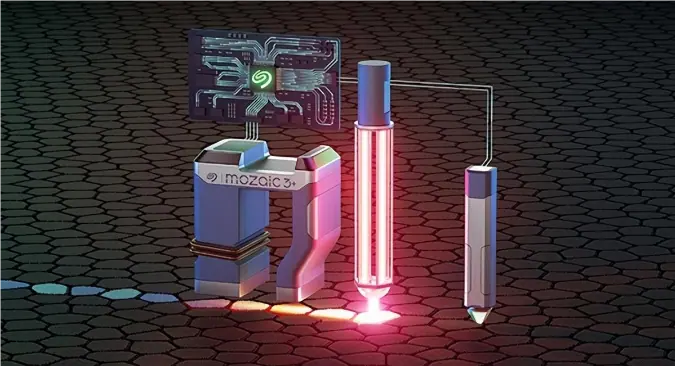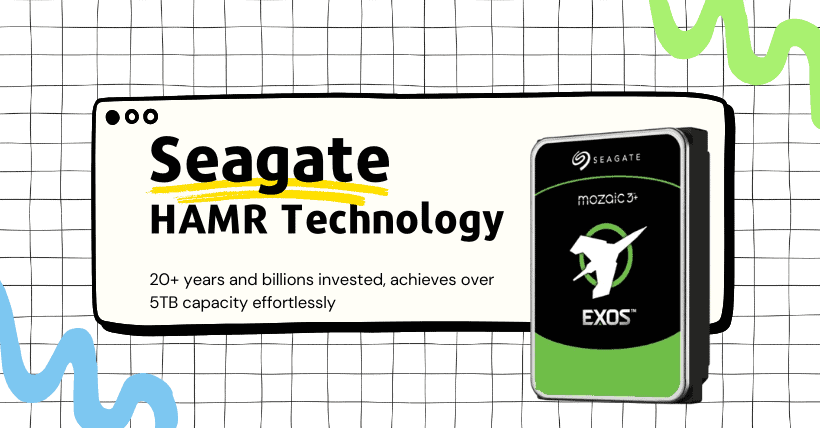For many years, the debate over which is the future between HDD mechanical hard drives and SSD solid-state drives, and whether SSDs can completely replace HDDs, has persisted without a clear answer. This ongoing discussion underscores that both types of drives complement rather than conflict with each other: one excels in large capacity and low cost, while the other triumphs in high performance.
In fact, approximately 90% of data in data centers and enterprise environments is stored on mechanical hard drives due to their enduring stability, which SSDs currently cannot match.
To address this, major companies like Seagate have been dedicated to advancing new mechanical storage technologies. For instance, technologies like Heat-Assisted Magnetic Recording (HAMR) have been in development for over 20 years with investments exceeding hundreds of millions of dollars, aiming for practical mass production.
Seagate’s latest Mozaic 3+ platform, based on HAMR, was officially launched earlier this year.

HAMR aims to increase storage density, potentially doubling total hard drive capacities by reducing the size of magnetic grains and packing them more densely, thereby boosting areal density significantly.
As mechanical hard drive platters spin at high speeds, they write and rewrite magnetic particle polarities. Smaller particles lead to higher areal densities.
However, as density increases, there is a greater risk of particles losing magnetism or being remagnetized by nearby read/write actions, potentially causing instability if particles are placed too close together.
Seagate has researched new platinum alloy media that can magnetize smaller particles, but it requires operating at elevated temperatures and using a laser beam to quickly heat a small spot on the media for magnetization, followed by cooling to stabilize the particles.
Components like 12nm process integrated controllers, magnetic cores, superlattice platinum alloy media, nanophotonic lasers, photon funnels, quantum antennas, seventh-generation spin readers, and plasma writers are integral to Seagate’s HAMR technology, making it the only company to commercialize this technology successfully.

The Mozaic 3+ platform based on HAMR has achieved single-disk capacities exceeding 3TB, enabling Seagate’s flagship enterprise hard drive, the Exos Galaxy, to exceed 30TB and enter mass production.
In the future, single-disk capacities are expected to surpass 4TB and 5TB, with individual drive capacities potentially reaching 40TB or even 50TB!
For enterprises and data centers, larger single-drive capacities mean significantly fewer drives needed for equivalent storage demands, thereby saving space, costs, and being more environmentally friendly.
Upgrading all 16TB drives to 30TB drives could reduce power consumption per TB by 45%.
Especially in the era of AI with its massive data growth, the timing of HAMR couldn’t be better.
Regarding the reliability of HAMR drives, Seagate believes they can rival traditional hard drives, with a lifespan of approximately 10 years.
Seagate states, “This technology (HAMR) isn’t just a simple upgrade; it’s a new platform, a turning point that will lead us to broader and brighter horizons.”
“With the advent of the AI era, both SSDs and HDDs will coexist for the long term, each offering its own unique value in storage technologies and media.”

Disclaimer:
- This channel does not make any representations or warranties regarding the availability, accuracy, timeliness, effectiveness, or completeness of any information posted. It hereby disclaims any liability or consequences arising from the use of the information.
- This channel is non-commercial and non-profit. The re-posted content does not signify endorsement of its views or responsibility for its authenticity. It does not intend to constitute any other guidance. This channel is not liable for any inaccuracies or errors in the re-posted or published information, directly or indirectly.
- Some data, materials, text, images, etc., used in this channel are sourced from the internet, and all reposts are duly credited to their sources. If you discover any work that infringes on your intellectual property rights or personal legal interests, please contact us, and we will promptly modify or remove it.








